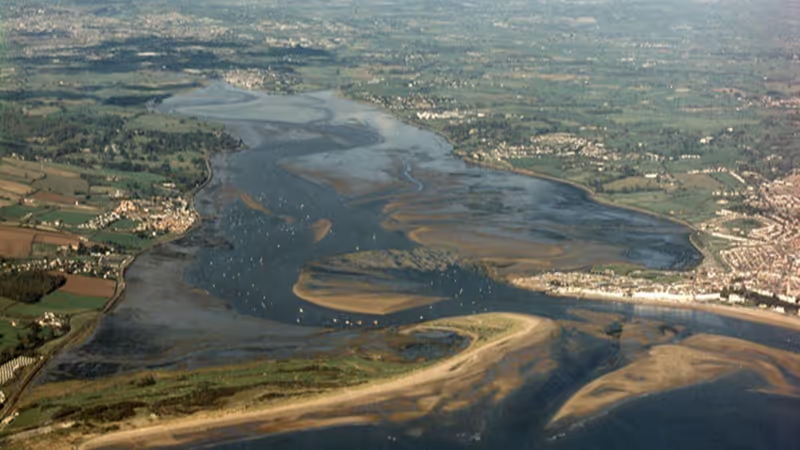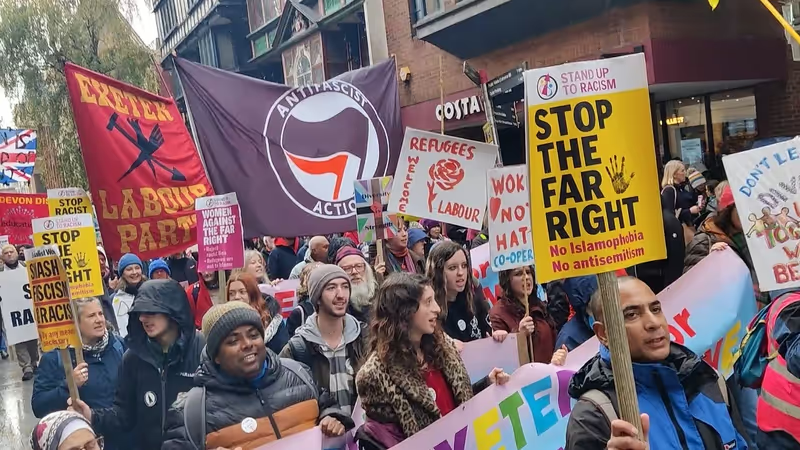As the results roll in from local elections taking place across the country, Labour is taking hundreds of council seats off the Conservatives on top of winning new mayoralties and taking control of some councils for the first time.
It won the Blackpool South by-election overnight with the third biggest swing from the Conservatives to Labour since 1945.
Exeter’s 2024 election results tell a different story. The party’s share of the vote has fallen by 6% since last year and is down in twelve of the city’s thirteen wards.
However to ascribe its performance solely to the impact of the divisive row over the Heavitree Low Traffic Neighbourhood, and the group of independents who stood partly to oppose it – one winning in Heavitree itself – is to discount Green and Liberal Democrat gains in Newtown & St Leonard’s and Duryard & St James.
It would also be to misread Labour’s close call in Mincinglake & Whipton, where its vote share has plummeted by more than 23 points. Local anger over greenfield developments at Pendragon Road and Celia Crescent, among other things, is also likely to be responsible for the Independent Group candidate coming within 70 votes of unseating Labour in what was a party stronghold until now.
At the same time the Conservative vote across the city has largely held up. While Labour won in Topsham for the third time in three years, Conservative support there remained unchanged. And the Conservatives held St Loye’s, now the only Exeter ward represented by the party, with a vote share that increased by nearly 3%.
Labour’s victory in St Thomas set the Liberal Democrats’ recent progress in the ward back significantly. But perhaps only because the loss of 2% of its vote share stood up well against votes split between an a well-known ex-Labour Independent Group candidate, a well-known Liberal Democrat and the Greens, who increased their share to 11%.
In Pennsylvania Labour lost a third of its lead but still comfortably kept the Greens at bay. All the major parties lost vote share here. In Alphington, while its vote share fell by 6% and its lead over the Conservatives narrowed, it remained well ahead. The other major parties maintained their vote shares here.
In Pinhoe its vote share fell by 9% and the Conservatives’ share by 8%. Both the Greens and LibDems increased their vote shares, and the Independent Group candidate came third with 13% of the vote.
The party’s best performance was in St David’s, the only ward in which it increased its share, where the Greens lost ground to all three major parties. The Independent Group didn’t field a candidate here.
In ten of thirteen wards Labour lost vote share to candidates from across the political spectrum; Independent Group candidates took vote share from all the parties in three. Labour remains in control of the council until 2026. It is Devon County Council’s turn to hold local elections next May instead.
Our 2024 local elections results briefing includes full details of votes cast for each candidate with vote share and vote share change by party in each ward, plus turnout and the distribution of seats.
Caution is required when comparing Independent Group vote share with major party vote share across all Exeter’s wards as it did not field candidates in five of them. Had its performance been proportionately replicated across the city its overall vote share would have been closer to 19%, about half a percentage point higher than the Conservatives and about 1% behind the Greens.
Nevertheless, citywide vote shares in this range rarely translate to proportionate seat wins because of the First Past the Post electoral system, which has numerous disadvantages and is the object of active electoral reform campaigns.
In 2016, when all Exeter’s seats were exceptionally elected at the same time, Labour won in 30 of 39 wards with 47% of the vote while the Liberal Democrats won a single seat with nearly 15% of the vote and the Greens won no seats at all despite receiving more than 14% of the vote.
In 2022 Labour won twelve of seventeen seats with 46% of the vote. But last year the Liberal Democrats and Greens finessed their electoral strategies with the result that Labour won only seven of thirteen seats with 44% of the vote, the Liberal Democrats won two seats with 12% of the vote and the Greens won three seats with 22% of the vote.
Both Liberal Democrat and Green votes translated into more city council representation than Conservative votes, although Labour still benefited disproportionately from the system.
This year, however, its counterproductive consequences have reverted to favouring Labour, which has won eight of thirteen seats with 38% of the vote.
The Greens won two with a 20% vote share, the LibDems and the Independent Group one each with vote shares between 10% and 12%. The Conservatives also won only one seat despite receiving nearly 18.5% of the vote.
These consequences are even more apparent, as is First Past the Post’s impact on the Conservatives in Exeter, when non-voting electors are included in the analysis.
None of the elections held in the city since its current ward boundaries were introduced in 2016 have involved more than 43% of its electorate.
Fewer than 17% of Exeter’s then 93,000 registered electors voted for Labour in 2021’s city council elections, while more than 22% voted for other parties.
Labour nevertheless won eleven seats and other parties three between them. In 2022 Labour’s vote share was even lower but the party won twelve seats.
This year its vote share was only a little over 13% of the city’s electorate and it still won eight of thirteen seats.
Exceptions to these low local election turnouts in Exeter, which have fallen steadily over the past four years, from 39% in 2021 to 35% this year, only occur when a general election is held on the same day. Around 64% of the electorate typically vote when their MP is on the ballot.
Because turnout is so much higher in parliamentary elections, local election party vote shares can only offer limited proxy insight into general election voting intentions.
In Exeter, until new parliamentary boundaries came into force at the end of last year the picture was further complicated by mismatches between parliamentary and city council boundaries.
Now, however, with all of Pinhoe, Priory and Topsham cleanly hived off into the new Exmouth and Exeter East constituency, city council voting patterns in Exeter’s other ten wards may be used, with caveats, to infer changes in constituency-level party support.
Exeter Labour probably has five months in which to line up its ducks before Steve Race arrives from London to take over as constituency MP, which could ruffle feathers again as long-serving party employees are expected to lose their constituency office jobs to the team he is bringing with him.
Labour’s national and south west regional executives made sure he would be parachuted in as the city’s next MP back in 2022. The party’s Exeter elections performance might be making him wish they’d picked somewhere else for him to land.
Methodology note
As the 2016 city council elections were held using the multiple non-transferable vote system each voter was allowed to cast up to three votes which were not ranked in any order of preference.
Because not all voters cast all three of their votes a precise vote share for individual candidates cannot be derived from the recorded results.
This also applies to two individual ward elections held since then, in Priory in 2019 and Mincinglake & Whipton in 2021, when voters were invited to cast up to two votes to elect two councillors at the same time, and in Exwick, Heavitree, Pennsylvania and Priory in 2022.
Calculating comparative party vote shares in Exeter City Council elections over time is further complicated because the Green Party and the Liberal Democrats stood aside for independent candidate Jemima Moore in Newtown & St Leonard’s in 2019, then formed a cross-party alliance which led to them standing aside for each other in a total of six wards across the city in 2021.
Consequently, a proportional share of the ballots cast for the leading candidate in each party in each ward in which the party stood has been used to compare major party support in the principal city council elections that have taken place since 2016.
We believe this is the best available method to enable statistically meaningful comparisons between the major parties in the city. Mid-year by-elections have been excluded.
Candidates from other parties, as well as independent candidates, have also stood in each of these elections.
UKIP contested most, but not all, of the city’s wards in 2016 and again in 2019, but not in 2018. The Women’s Equality Party also contested city council elections in Duryard & St James in 2018, 2019 and 2021. Candidates have also represented other small parties in some years.
All these smaller parties have been grouped together to simplify comparison. Where more than one non-major party stood in a multiple non-transferable vote election the best performing candidate has been included in the analysis.
Independent candidates, when they have stood, have been presented separately. In 2019 two stood at the same time and have been presented together. This year’s Independent Group candidates have also been differentiated in the data and presented like the other smaller parties.










